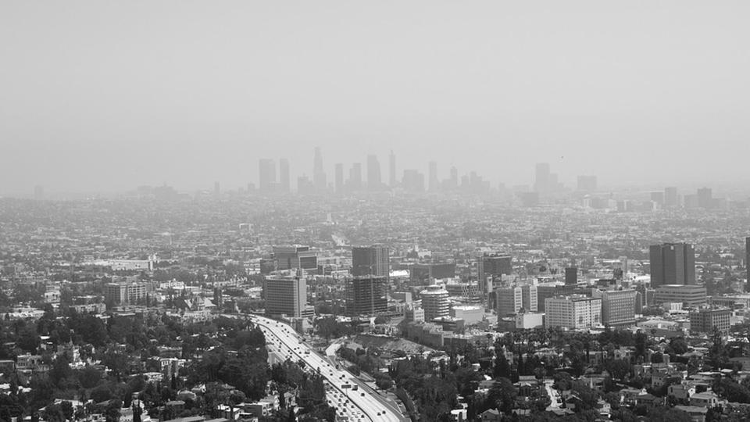The Challenge
Reducing greenhouse gas (GHG) emissions helps mitigate climate change and improves air quality, which protects public health. California has the worst air pollution than any other state in the country. As the world’s fifth-largest economy, the most populous state in the nation, and a coastal state vulnerable to climate catastrophes, we have ample reasons to be a leader in the race to net-zero GHG emissions. While achieving net-zero emissions is critical in limiting global temperature rise, the resulting long-term air quality and health impacts in the state remained unclear. Quantifying these impacts can help demonstrate the benefits of climate change action to local communities and policymakers.
The Solution
This project quantifies the environmental, health and monetized co-benefits of achieving net-zero GHG emissions by 2050 in California through a newly developed, integrated model. The model combines energy and emission technology modeling, chemical transport simulations, and health impact assessments. Results indicate that a systematic, statewide change in today's energy consumption pattern is essential to achieving the 2050 target. The researchers demonstrate that this transition is possible through deep decarbonization technologies (e.g. electrification and carbon capture and sequestration) and more stringent policies. The research team then analyzed how ambient air quality would change under a net-zero emissions scenario, to estimate the impact of cleaner air on public health. The project demonstrates how taking bold action on climate change will not only help the economy but also benefit the health of California residents—especially those in disadvantaged communities that suffer the most air pollution-related health impacts.
Results
- Approximately 14,000 premature deaths caused by air pollution can be prevented in California annually if the state achieves net-zero GHG emissions by 2050. Additionally, acute respiratory symptoms and asthma exacerbation will be reduced in approximately 8.4 million adults and 1 million children annually.
- Disadvantaged communities will experience disproportionately higher levels of health co-benefits. The state’s top 25% most polluted census tracts would receive approximately 35% of the health benefits from the projected improvements in air quality.
- The monetary savings of achieving net-zero greenhouse gas (GHG) emissions by 2050 exceed the cost by $109 billion per year.
Next Steps
Local and regional regulatory agencies are encouraged to make use of the proposed emission scenarios and related technical requirements to determine realistic application strategies. Urban planners can also develop local transportation and land use strategies to reduce GHG emissions in light of the study results. Dr. Yifang Zhu, the principal investigator, has also presented this project to the Los Angeles Mayor’s Office to promote policy changes in the City of Los Angeles to support its transition to a sustainable city.
Additional Outcomes to Date
Dr. Yifang Zhu received funding from the Los Angeles Department of Water and Power to examine air quality and public health co-benefits in Los Angeles at a higher spatial resolution. Dr. Yu Gu, co-investigator, was awarded a National Science Foundation (NSF) grant to study the impact of air pollution on clouds. The NSF grant will help investigate the aerosol-cloud interactions, which can potentially amplify air quality benefits as suggested by the study's simulations.
Reports and Publications
Wang, T., Jiang, Z., Zhao, B., Gu, Y., Liou, K., Kalandiyur, N., Zhang, D., & Zhu, Y. (2020). Health Co-Benefits of Achieving Sustainable Net-Zero Greenhouse Gas Emissions in California. Nature Sustainability, doi:10.1038/s41893-020-0520-y
Wang, T., Zhao, B., Liou, K., Gu, Y., Jiang, Z., Song, K., Su, H., Jerrett, M., & Zhu, Y. (2019). Mortality Burdens in California due to Air Pollution Attributableto Local and Nonlocal Emissions. Environment International, 133, 105232-105232. doi:10.1016/j.envint.2019.105232
Zhao, B., Wang, T., Jiang, Z., Gu, Y., Liou, K., Kalandiyur, N., Gao, Y., & Zhu, Y. (2019). Air Quality and Health Cobenefits of Different Deep Decarbonization Pathways in California. Environmental Science & Technology, 53(12), 7163-7171. doi:10.1021/acs.est.9b02385

Research Team
Yifang Zhu
Environmental Health Sciences, Fielding School of Public Health
Institute of the Environment & Sustainability, Center for Clean Air
yifang@ucla.edu
Kuo-Nan Liou
Atmospheric & Oceanic Sciences, Physical Sciences
knliou@atmos.ucla.edu
Yu Gu
Atmospheric & Oceanic Sciences, Physical Sciences
gu@atmos.ucla.edu
Michael Jerrett
Environmental Health Sciences, Fielding School of Public Health
Institute of the Environment & Sustainability, Center for Clean Air
mjerrett@ucla.edu




